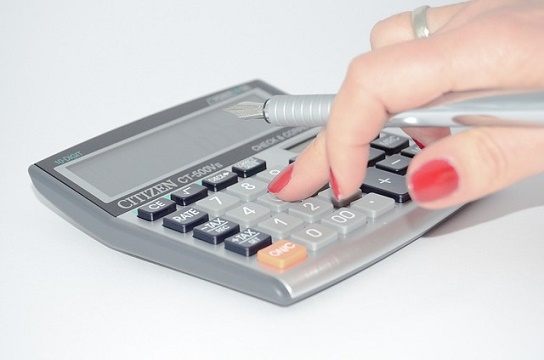
Taking the TOEFL is hard enough, so you shouldn’t have to spend extra time worrying about how your exam will be scored or how to score your practice exams. Our TOEFL score calculator will help you understand how your score is determined by explaining how the TOEFL is scored, what raw and scaled TOEFL scores are, and how to calculate your own scores for each section of the TOEFL. Then, you can use this knowledge to hone in on exactly how to reach your TOEFL score goals.
How Is the TOEFL Scored?
If you’re taking practice TOEFLs, you’ll probably need some help for scoring your tests. You can find links to the best TOEFL practice tests here. TOEFL prep books are also a great source of practice tests. Some of these resources, such as the Official Guide for the TOEFL, have their own score conversion charts, but most do not, so it can be very useful to know how to score your practice tests.
This guide will focus on the TOEFL iBT, or the computer-based TOEFL, which is the version 97% of TOEFL test-takers take. ETS, the company that creates and administers the TOEFL, gives very little information on the paper-based (pBT) TOEFL, so it’s difficult to provide an accurate TOEFL score calculator for that version of the test.
The TOEFL has four sections: Reading, Listening, Speaking, and Writing. For each of those sections, you get a score from 0-30, which means your total TOEFL score will be from 0-120. You’ll receive one or more points, depending on the type of question, for each question you answer correctly. On the TOEFL, there is no penalty for choosing a wrong answer.
Raw vs. Scaled Scores on the TOEFL
If you’ve taken the TOEFL before or know a little about the test, you may know that there aren’t exactly 30 questions on each TOEFL section. So then why is each section scored out of 30? It’s due to scaled scoring. The TOEFL has raw and scaled scores, both of which we’ll explain in this section.
By the way: we have built the world's best online TOEFL course. Get online practice (TPO-sytle!) and individual grading and feedback on Speaking and Writing.
To be fair, it's possible to get a good TOEFL score studying alone. But PrepScholar is the world's most effective TOEFL course if you are worried about the TOEFL and are struggling to improve your score.
Learn how you can improve your TOEFL score by 15 points today.
Raw Scores
The total number of questions you answer correctly on each section of the TOEFL is what test makers call a “raw” score. If a TOEFL Listening section has 34 questions and you get 31 of them correct, your raw score for that section would be a 31 (assuming all questions are worth 1 point, which we discuss more in the next section). However, you won’t see a 31 on your TOEFL score report, instead, you’ll see a scaled score between 0 and 30.
Converting From Raw to Scaled Scores
A raw score doesn’t mean much on its own. It only shows how many total questions you answered correctly. All the scores you see on your score report are scaled scores. ETS is pretty secretive as to how it converts scores, and exact process of how raw scores are converted to scaled scores varies a bit for each TOEFL, so there’s no one calculation to convert raw scores to scaled scores.
You can use a general conversion chart to get an idea of how your raw score will translate to a scaled score, but the exact process will always depend on the specific exam you take. These variations in the conversion process are done to take into account slight differences in difficulty between individual TOEFL exams.
A slightly easier TOEFL means more people would get more answers correct, resulting in higher raw scores for everyone. This wouldn’t be fair to people who took a more challenging TOEFL because it would make it seem like their English skills weren’t as strong as the English skills of the people who took the first exam. Scaled scores help reduce these differences so no one is penalized for taking a more difficult test.
So, getting a raw score of 40 on a more difficult Reading section where fewer people earn high scores might mean you earn a scaled score of 29. But getting a raw score of 40 on an easier Reading section where more people earn high raw scores might mean you earn a scaled score of 27.
In general, the test-makers try their best to make TOEFLs similar to one another, so there shouldn’t be too much discrepancy between tests, but there will always be some. This is why general conversion charts can act only as a basic guideline, not a guarantee of how scores will be converted.

How to Calculate Raw Scores for Each TOEFL Section
After you take a practice TOEFL, use these instructions to calculate your raw score for each section of the test. For some sections you can just add up the number of questions you answered correctly, while for others you’ll need to use rubrics to get your raw TOEFL iBT score calculation. Remember, raw scores aren’t what you see on your score report, so you need to look at our raw to scaled score conversion charts in the next section to figure out what your final TOEFL scores will be.
Reading
iBT Raw Score Range: 0-45
All Reading questions are multiple choice, and each question will be worth 1-3 points. The majority of Reading questions are single-answer multiple-choice questions where you are given four answer choices and only one is correct. Each of these questions is worth one point. At the end of most passage question sets is a question type known as “Reading to Learn.” For these questions, you’ll be asked to organize the main points of the passage in either a chart or a summary. Unlike other Reading questions, Reading to Learn questions are worth 2-3 points. The number of points the question is worth will be stated beneath the question, and partial credit is possible.
To calculate your Reading raw score, simply give yourself one point for every multiple choice question you answered correctly (and potentially 2-3 points for every Reading to Learn question). The sum of these points is your raw score.
Listening
iBT Raw Score Range: 0-34
Like Reading, all Listening questions are multiple choice, and most will have one correct answer. However, there will also be some questions with two correct answers and questions where you need to organize events or facts. Unlike Reading, each of these questions will only be worth one point, so there are no Listening questions worth multiple points.
To calculate your raw Listening score, give yourself one point for each question you answered correctly. The sum is your raw score.
Speaking
iBT Raw Score Range: 0-24
Speaking is probably the trickiest section to grade. If you can, record your answers. This will make it easier to grade yourself because you’ll have a record of what you said and won’t need to rely on your memory. There are six Speaking tasks, and for each you’ll receive a raw score of 0-4 (whole points only). The best way to estimate your raw score for this section is to use the TOEFL’s scoring rubric for the Speaking section. We have a simplified version of the rubric below which makes it quicker and easier to grade your answers, but you can also use the official TOEFL Speaking rubrics. It can be helpful to have a friend or tutor who has strong English skills grade your Speaking tasks in order to get a more objective and accurate view.
For each Speaking task, go over the rubric carefully and decide which score best represents your response. Add those six scores together for your raw Speaking score.
0 = Didn’t answer, answered in a language other than English, or the speech was incomprehensible.
1 = Speech was minimally related to topic, speech had numerous errors, was choppy, and/or was largely incomprehensible.
2 = Speech mostly stuck to topic, but didn’t completely answer the question or follow the prompt. Speech was basically intelligible, but had several mistakes in pronunciation, grammar, or was too simple in vocabulary and style.
3 = Speech addresses and fulfills topic, with minor exceptions. Speech is mostly intelligible and fluid, though may have some issues with pronunciation, grammar, or vocabulary. Demonstrates a fairly automatic and fluid mastery of English, with some notable lapses.
4 = Speech addresses and completely fulfills topic. Speech has a fluid and well-paced flow, with only minor lapses in pronunciation or grammar. Was coherent, intelligible, complete, and shows an automatic and fluid master of English.
Writing
iBT Raw Score Range: 0-10
There are two Writing tasks, the Independent Writing Task and the Integrated Writing Task. Each is given a score from 0-5 (whole points only). Like Speaking, for Writing you’ll need to grade your own responses against the TOEFL rubric, but this section is often easier since you’ll have your essays right there to look over as you’re grading yourself. You can have another person grade you, and you can also review sample essays ( like from the resources we mentioned in the first section of this guide) and their scores to get a better idea of what graders look for.
Below is a simplified rubric for grading your essays, or you can use the official TOEFL Writing rubrics. Add both essay scores together to get your raw Writing score.
0 = No essay, essay is unconnected to the topic, or essay is not in English.
1 = Little or no response to the prompt, or essay is mostly incomprehensible.
2 = Essay somewhat follows topic, but shows significant difficulties in language, organization, and development. Uses no or very few examples.
Want to improve your TOEFL score? We have the world's leading TOEFL course.
Built by world-class instructors from Harvard and MIT, the course offers individual review, interactive lessons, and realistic online praactice, at an affordable price! It's the fastest way to get your target TOEFL score.3 = Essay mostly follows topic and has some general organization and development. Uses some examples, but only vaguely connects them to the thesis or misses key points. Has some errors in grammar or vocabulary.
4 = Essays follows topic, but is somewhat unorganized or is not fully developed. Essay uses relevant examples, but lacks some clarity or connection between examples and thesis statement.
5 = Essays follows topic, is well developed and organized and uses relevant examples. Clearly ties examples to thesis statement. Essay demonstrates accurate use of vocabulary, grammar, and sentence structure with some minor errors.

How to Calculate Scaled Scores for Each TOEFL Section
Use the TOEFL score table below to convert your raw scores into scaled scores for each section of the exam. After you have your raw scores for each section, you can figure out what scaled score each corresponds to by looking at the column on the far left. So, for example, if you got a raw Reading score of 41, that translates to a scaled score of 29. A raw Writing score of 8 would be a scaled score of 25.
Remember, the TOEFL score table will vary slightly for each test, so this isn’t an exact conversion, but it’ll get you a good estimate of what your score would be on the real exam.
| Scaled Score | Reading | Listening | Speaking | Writing |
| 30 | 45, 44 | 34 | 24 | 10 |
| 29 | 43, 42, 41 | 33 | 23 | — |
| 28 | 40, 39 | — | 22 | 9 |
| 27 | 38, 37 | 32 | — | — |
| 26 | 36 | 31 | 21 | — |
| 25 | 35, 34 | 30 | 20 | 8 |
| 24 | 33 | 29 | 19 | — |
| 23 | 32 | — | 18 | — |
| 22 | 31 | 28 | 17 | 7 |
| 21 | 30 | — | — | — |
| 20 | 29 | 27 | 16 | 6 |
| 19 | 28 | 26 | 15 | — |
| 18 | 27 | 25 | 14 | — |
| 17 | 26 | 24 | 13 | 5 |
| 16 | 25 | 23 | 12 | — |
| 15 | 24 | 22 | — | — |
| 14 | 23 | 21 | 11 | 4 |
| 13 | 22 | 20 | — | — |
| 12 | — | 19 | 10 | 3 |
| 11 | 21 | — | 9 | — |
| 10 | 20 | 18 | 8 | — |
| 9 | 19 | 17 | — | — |
| 8 | 18 | 16 | 7 | 2 |
| 7 | 17 | 15 | — | — |
| 6 | — | 14 | 6 | — |
| 5 | 16 | 13 | 5 | 1 |
| 4 | 15 | 12 | 4 | — |
| 3 | 14 | 11 | 3 | — |
| 2 | 13, 12 | 10 | — | — |
| 1 | 11, 10 | 9 | 2 | — |
| 0 | 9 and below | 8 and below | 1, 0 | 0 |
Why Are These Calculations Important?
How does knowing how to calculate your different TOEFL scores help? The most important reason is that TOEFL score calculator can help you get accurate score estimates for practice tests you take that don’t have their own automatic grading or score charts. This lets you get an accurate score for practice tests so you have a better idea of how close you are to your TOEFL goal scores and where you need to make improvements.
Knowing the scaled score you got and how that compares to your goal scores is much more helpful for studying than just knowing you got, say, 28/30 on the Listening section. Having inaccurate TOEFL iBT score calculations may cause you to not study enough or study the wrong materials since you’re not scoring yourself correctly.
Also, if you keep track of how many questions you weren’t sure about on test day, you can use that info to check the TOEFL score tables once you’re back home and try to get a rough idea of how well you did on the TOEFL without waiting for your official score report.
Review: Using the TOEFL Score Calculator
Many TOEFL practice tests don’t include scoring tables, which can make it hard to estimate your score. The TOEFL uses both raw and scaled scores, but the scaled scores are the ones you see on your score report. As such, TOEFL iBT score calculations require more than just adding up the number of questions you got right; you need to know how to convert from raw to scaled scores.
After finding your raw score for each section, you can use the TOEFL score calculator chart to convert those numbers into scaled scores. Having this information is useful because it helps you get an accurate idea of how well you’re doing on practice tests, which you can use to adjust your studying in order to meet your TOEFL score goals.
What’s Next?
Not sure what TOEFL score you should be aiming for? Learn what a good TOEFL score is based on the schools you’re interested in.
Looking for a great TOEFL prep book? A good prep book can be the most important study tool you use, and we have information on all the best TOEFL prep books you should consider.
Practice tests are one of the best ways to prepare for the TOEFL. We’ve gathered information on the highest-quality TOEFL practice tests into one place so you have access to the best study materials.
Ready to improve your TOEFL score by 15 points?
Download our best TOEFL Strategy eBook (valued at $14.49) for FREE! Learn the top 5 strategies you must know to improve your TOEFL score. Download it for free now:
